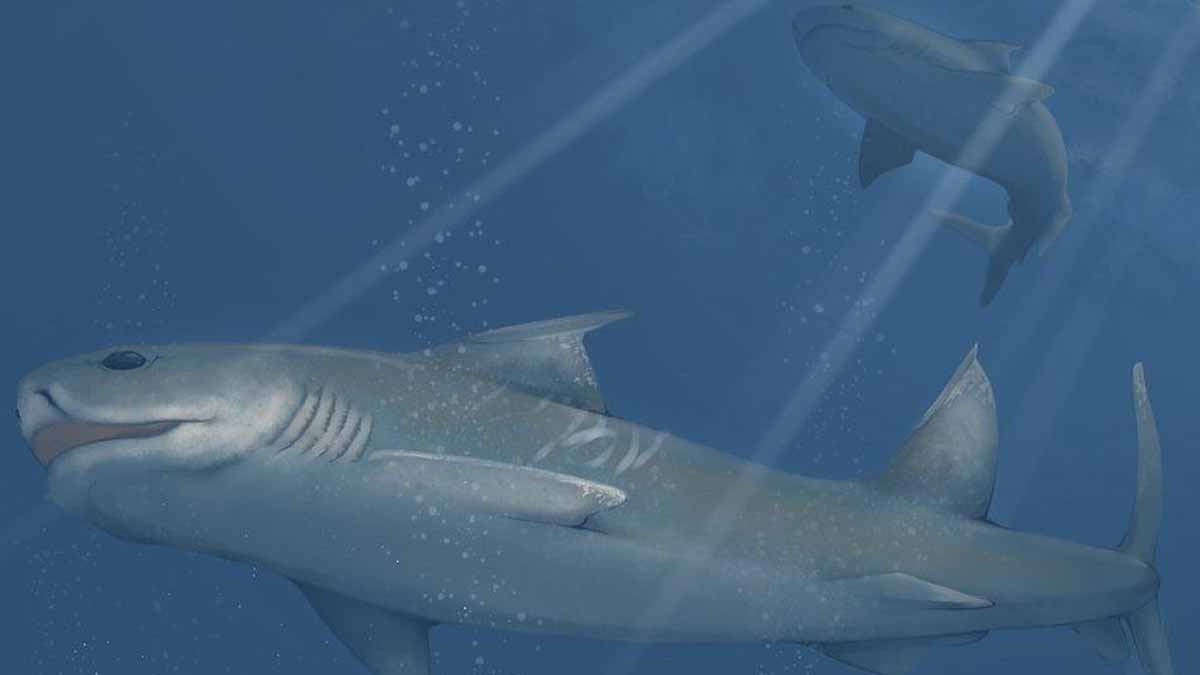A vast underground maze has yielded clues to a forgotten shoreline, and the evidence bites. In strata older than forests we know, fossils tell of speed, teeth, and change. The site sits inside the world’s largest cave system, and the record stretches far back. Because conditions stayed stable, delicate parts survived and still inform debates. In this setting, prehistoric sea monsters step from stone into story, and the picture sharpens without giving everything away.
Ancient context for prehistoric sea monsters found in the world’s largest cave
Mammoth Cave extends more than 420 miles, or 675 kilometers, beneath the surface. Researchers call it the world’s largest cave system, and fresh work there revealed two fossil sharks from shallow coastal waters.
The age reaches beyond 325 million years, so timelines move. Shark specialist John-Paul “JP” Hodnett, of the Maryland–National Capital Parks and Planning Commission, worked with the National Park Service Paleontology Program to identify them.
The sharks belong to the ctenacanth group and measure about 10 to 12 feet, or 3 to 3.6 meters. That size matches an oceanic whitetip today, so power matters. The names are Troglocladodus trimblei and Glikmanius careforum, and their remains come from limestone laid in the Middle to Late Mississippian Period. In this context, prehistoric sea monsters become data points rather than myths.
Layers, habitats, and the catalog they build
Those limestone units formed in warm, shallow seas that once covered parts of eastern North America. Because these waters shifted, the record stacks across multiple rock layers and tracks change.
Field teams have already identified more than 70 ancient fish species in the cave system, so diversity looks strong. A partial jaw from a young G. careforum preserves cartilage, which rarely fossilizes well. Since shark skeletons are mostly cartilage, erosion usually erases details before we can study them.
Here, protected chambers kept fragile textures intact and added depth to ongoing research on diversification. As continents drifted and seas rose and fell, groups split and adapted. So the broader picture links local finds to a moving globe and a living coastline.
Teeth, jaws, and rising seas connect clues across time
The jaw of G. careforum suggests a short head and a strong bite, which suits quick strikes. That bite likely targeted smaller fish and orthocones, squid-like creatures with long, straight shells.
T. trimblei, by contrast, shows branching tooth crowns that help seize and hold prey in rough water. Both species likely hunted nearshore, in habitats that later became Kentucky and Alabama.
Those waters teemed with bony fish, shelled organisms, and other marine life, so food webs ran dense. When scientists trace the fossils across layers, they see coastlines breathing in and out. Landmasses moved toward each other and then merged into Pangea, so currents changed. Because environments shifted, lineages did too, and prehistoric sea monsters tracked that motion with teeth and bone.
People, pathways, and the work behind each fragment
“Every new discovery at Mammoth Cave is possible due to collaborations,” said park superintendent Barclay Trimble. Researchers and volunteers mapped hidden passages, river channels, and cramped crawlways to find key pieces.
Members of the Cave Research Foundation joined the effort, and the name G. careforum honors that support. One tooth from T. trimblei sparked attention after Superintendent Trimble noticed it on a 2019 trip.
Seasoned cavers and geologists coordinated retrievals so fragile remains would not break, because one misstep can ruin context. An artist, Benji Paynose, reconstructed the scene with G. careforum in the foreground and two T. trimblei above. Stable cave temperatures slow decay, so preservation improves and policy can evolve. Park managers now fold new data into guidelines that steer future work and keep sites safe.
What these prehistoric sea monsters add to the evolution story
Scientists compare these fossils with collections from the same period worldwide to refine timelines. They record body size, tooth patterns, and skeletal traits, then test ideas against broader shifts.
As oceans changed and continents assembled, fish diversity rose and fell, so signals appear in the numbers. Teams also connect shark records with bony fish logs, coral traces, and other marine markers. Because methods integrate many lines, the picture gains depth while uncertainty narrows.
Even famous geologic areas still hold surprises, and Mammoth Cave keeps proving that point. The site offers windows onto a vanished coastline that linked what we now call Kentucky, Europe, and northern Africa. T. trimblei and G. careforum join a growing catalog, and prehistoric sea monsters now stand for careful work, better maps, and sharper tools.
The record deepens as collaboration, careful methods, and protected sites turn fragments into knowledge
Exploration still brings answers and fresh questions, because each layer holds another piece. As teams push deeper, methods improve and risks fall, so context survives.
The two sharks show how careful work can redraw a map without noise. With patience and strong partnerships, future passes may reveal more species and sharper links.
The coast is gone, yet its imprint stays, and the story keeps moving.
